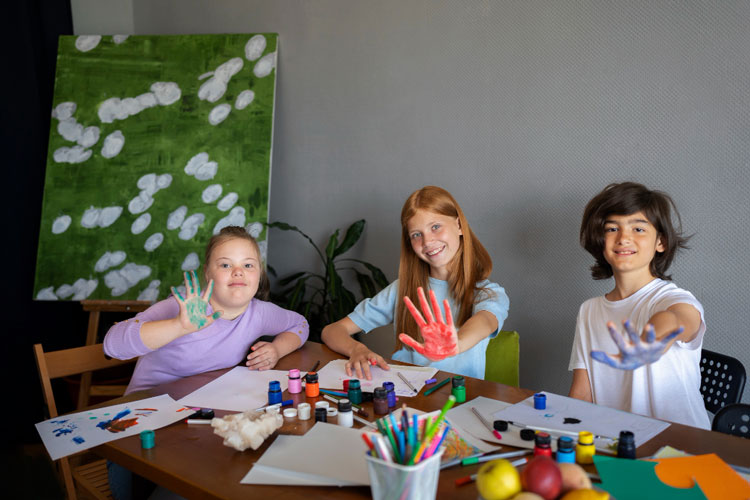Storytelling is a powerful teaching tool that captivates students and fosters deep understanding. By integrating storytelling with the Australian Curriculum (AC), educators can design lessons that are both informative and engaging. To create an effective lesson using storytelling, it is important to follow a series of steps that guide educators through the planning process. Here are our suggested steps:
1. Identify Learning Objectives
- Start with the AC: Review the relevant content descriptors and achievement standards from the Australian Curriculum for your specific topic, subject and year level.
- Have Clear Objectives: Focus on one or two key learning intentions and success criteria to maintain a clear focus for the lesson.
2. Choose an Appropriate Story
- Select a Story that Aligns with the Learning Objectives: Discover a rich collection of children’s books on Steven De GC’s platform, designed to align with the AC descriptors, topics, and learning areas.
- Consider Engagement and Age Appropriateness: Ensure that the chosen story resonates with the students’ developmental stage and interests. The story should spark curiosity, foster emotional engagement, and support the learning objectives.
3. Create a Narrative Connection to the Lesson Content
- Introduce the Topic through the Story: Begin the lesson by reading the selected story, or part of it, aloud, using it as a tool to introduce key concepts or themes that are relevant to the lesson’s focus.
- Engage Students During the Reading: Follow effective storytelling tips, or strategies, such as Dialogic Reading, to captivate the students’ engagement and comprehension throughout the reading.
4. Facilitate Discussions and Reflections
- Lead Discussions: Facilitate small-group or whole-class discussions after reading where students can reflect on the lesson’s objectives and share personal experiences. This reinforces their understanding of the story’s relevance to their own lives.
- Encourage Critical Thinking: Ask open-ended questions, such as “How did the character’s feelings change?” or “Have you ever felt that way?” to promote intimate sharing and help students organise their thoughts better.
5. Integrate Interactive Activities
- Select Activities Suitable for Early Childhood: Plan activities that encourage hands-on learning, collaboration, and active participation.
- Encourage Student Interaction: Activities should foster interaction between students to develop their communication and social skills.
6. Assess Learning
Tailor Assessments to Success Criteria: Design assessment tasks that directly align with the learning intentions and success criteria, ensuring that each task provides a clear measure of student understanding. It’s important to keep assessments simple and appropriate for students’ developmental stages, allowing them to demonstrate their learning in a way that feels comfortable and accessible. A range of activities that allow for different expressions of understanding and cater to diverse learning styles should be employed.
7. Wrap Up
- Summarise Key Learnings: Conclude the lesson by summarising the main points from the story and connecting them back to the lesson’s objectives.
- Encourage Student Reflection: Provide time for students to reflect on what they learned.
8. Reflect On Planning
This part is for you – the teacher. Reflection is essential for teachers as it provides an opportunity to evaluate the effectiveness of their lesson and identify areas for improvement for the next planning. For Foundation and Year 1 students, reflecting on teaching practices helps educators understand how young learners engage with stories and concepts, allowing for adjustments to better support their developmental needs. For older cohorts, reflection can highlight the effectiveness of instructional strategies and classroom management technique.
Example: Guided Subitising Planning
| Component | Elaboration |
|---|---|
| Identify Learning Objectives | Subject: Maths Year level: Foundation LI: Students are learning to subitise (ACMNA003) small collections up to five. SC: Students can subitise (ACMNA003) the number of fruit pieces on flashcards. Link to the AC: ACMNA003: Subitise small collections of objects |
| Choose an Appropriate Story | Story: The Very Hungry Caterpillar |
| Create a Narrative Connection to the Lesson Content | Question: How do you know how many pieces of fruit you have in your lunchbox? – SS: Counting → The caterpillar has a very special way to do so without counting. → Read the story. Narrative connection: The caterpillar uses subitising when he recalls the number of fruit pieces (e.g., apples, pears…) he eats by looking at them without counting. |
| Facilitate Discussions and Reflections | Whole Class Teaching/Practice as Discussions and Reflections – On the teacher’s white board: show a collection of objects (e.g., fruits, pokémons, dots on dice) for SS to practise subitising. – Allow SS to discuss with their partners before giving the answer to the teachers. The teacher reflects on SS’s problem. – Practise until firm. |
| Integrate Interactive Activities | Activity: Feeding The Caterpillar Materials: Flashcards of fruit collections, Legos, Lego piece with a caterpillar head Instruction: 1. Two teams of two take turns drawing a card from the facedown deck. 2. Each team says the number of fruit on the card using subitising (not counting). Teammates can help each other. 3. The other team acts as judges. 4. If the answer is correct, add one lego piece to the caterpillar, growing it longer. If the answer is incorrect, they all check by counting, and no lego piece will be added. There are no winners or losers—just short or long caterpillars. All caterpillars will be displayed on a special table for the day as achievements. |
| Assess Learning | Assessment: Observation and Informal Scaffolding Utilise a success criteria checklist while observing students and engage with them during activities to provide real-time feedback and pose questions that scaffold their learning. |
Using storytelling in lessons offers a creative and engaging approach to teaching. By carefully selecting stories and aligning them with the Australian Curriculum, you can create lessons that not only meet curriculum standards but also captivate your students. Through discussions, interactive activities, and well-aligned assessments, students develop a deeper understanding of content while being emotionally engaged in the learning process.
Now that you have the tools and strategies to plan an engaging lesson using storytelling, it’s time to put them into practice! Visit Steven De GC’s platform to explore a wide selection of children’s books that align with the Australian Curriculum and discover innovative ways to incorporate storytelling into your lesson plans. Start transforming your lessons today and make learning a captivating adventure for your students!
Don’t forget to share your experiences and reflections with fellow educators to inspire and learn from one another in the comment section below.













Leave a Reply